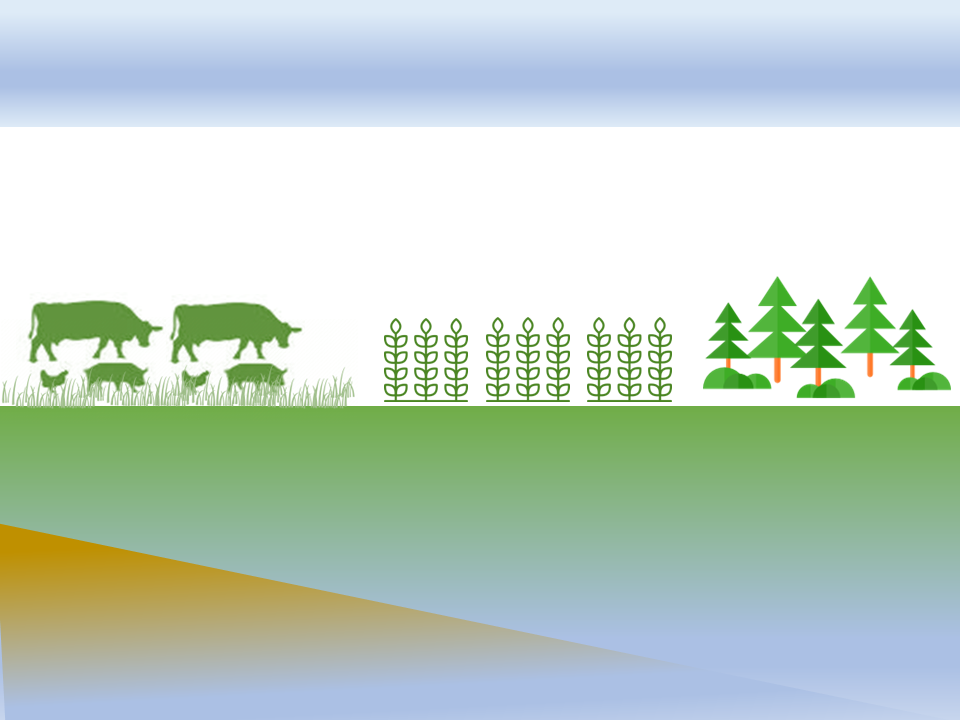Pick Up
983. Unexpected Consequences of Land Use Change: From Grassland to Cropland

983. Unexpected Consequences of Land Use Change: From Grassland to Croplan
As global warming continues, there is an ongoing search for sustainable agricultural production methods that balance human nutrition and food security with biodiversity and environmental protection. The production of animal-based foods is generally known to have a significant environmental impact. Therefore, when it comes to converting grasslands to croplands, one may wonder if this transition really contributes to climate change mitigation. This is because environmental protection and food security are intertwined with factors such as location, scale, and time frame, making it difficult to find universal solutions.
Today, we present a research paper published in NPJ Sustainable Agriculture that summarizes the general concepts of land use in agriculture and the unexpected challenges and solutions that can arise from land use change. The authors use the example of the United Kingdom's land use system to explain the conversion of grassland to cropland.
1. Historical background of land formation
According to the United Nations System of Environmental-Economic Accounting Central Framework, approximately 18.1 to 30.1 million km2, or about 12.2 to 20.2% of the land, is classified as grassland. In theory, land classification is based on whether the vegetation is dominated by herbaceous or woody plants, further divided into primary (climatic origin) grasslands and secondary (anthropogenic origin) grasslands. However, anthropogenic control is now more important than historical origin. In many agricultural areas, initial attempts were made to cultivate the land, and if the land had good drainage, it continued to be cultivated; if it was deemed unsuitable due to poor drainage, it was converted to pasture. By 2021, agricultural land in the United Kingdom will be divided between arable land (49%) and grassland (51%).
2. Unexpected consequences of land use change
・Impact on food supply
The conversion from grassland to cropland is generally supported for several reasons. One significant reason for positive opinions is the aspect of environmental protection, specifically the reduction of greenhouse gas emissions. However, from the perspective of food security, we must not overlook the challenges caused by changes in food supply. After conversion, considerations must be made regarding whether the land is suitable for crop cultivation, what to cultivate, the quality of the cultivated crops, their intended use, market demand, and even nutritional value. Actual crop yields depend on region-specific soil conditions, particularly drainage conditions, which have been a determining factor in existing land use decisions. Therefore, the hypothesis that a reduction in livestock numbers, which are currently major markets for low-quality grains, would lead to a decrease in demand and price, thereby achieving a reduction in carbon footprint per unit of food consumed, may not always hold true.
・Impact on Soil Fertility and Carbon Sequestration
The conversion from grassland to cropland has widely reported consequences on Soil Organic Carbon (SOC) loss. Regular soil disturbance and compaction lead to the physical separation of microorganisms from the soil structure, promoting mineralization, and a decrease in the opportunity for organic matter input into the system. It is estimated that SOC can decrease by up to 36% within 20 years after land conversion. Recent studies have shifted focus to shorter-term spans, suggesting that leaving some grassland in croplands or regularly applying compost made from cattle manure can increase SOC. However, apart from changes in soil structure, the intensive use of nitrogen fertilizers in crop cultivation undoubtedly has a significant impact on soil microbial function and diversity.
・Impact on nitrogen use efficiency (NUE)
Calculations excluding the influence of livestock show that the Nitrogen Use Efficiency (NUE) of grass production systems ranges from 50-80%, which is equivalent to or sometimes higher than that of human-edible arable production systems. However, when livestock are included, NUE drops to 10-40%. Inadequate management of excrement from livestock and its easy runoff into the environment are cited as reasons for decreased NUE. While it is clear that crop cultivation exhibits higher NUE compared to livestock, comparisons of nutritional value, such as protein content in the products, must not be overlooked. Reevaluating the livestock industry, including improvements in the management of livestock excrement, is also a consideration.
・Impact on environment and ecosystems
The production of high-carbon-footprint products like beef and dairy is known, but conversion to cropland is predicted to reduce methane gas produced during cattle digestion and nitrous oxide emitted from excrement. However, agricultural machinery use in croplands can lead to soil structure instability, organic matter mineralization, and the further release of both carbon dioxide and nitrous oxide. This will also have implications on the environment and ecosystems, as well as the impact on supply chains due to changes in the produced items. The cycling of ecosystems in land use involves plants, animals, and microbial populations with time lags, making quantification difficult. However, a strategic combination could potentially realize a three-compartment land use model (a novel form of the three-compartment land-sparing model) of grasslands, croplands, and natural habitats, providing both food production and ecosystem services.
Considering the above discussions, the conversion from grassland to cropland may bring about a series of complex physical, biochemical, ecological, and socio-economic changes. To seek the optimal land use that ensures a nutrient-rich food supply while contributing to biodiversity and environmental protection, it is necessary to be aware that unexpected changes can occur and approach this without preconceptions.
Reference
Blackwell, M.S.A., Takahashi, T., Cardenas, L.M. et al. Potential unintended consequences of agricultural land use change driven by dietary transitions. npj Sustain. Agric. 2, 1 (2024). https://doi.org/10.1038/s44264-023-00008-8
https://www.nature.com/articles/s44264-023-00008-8
Contributors: Solongo TUMUR and IIYAMA Miyuki (Information Program)
